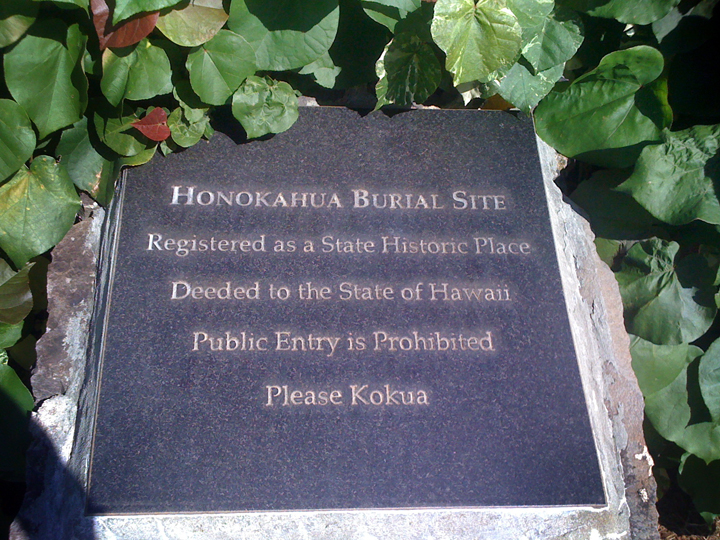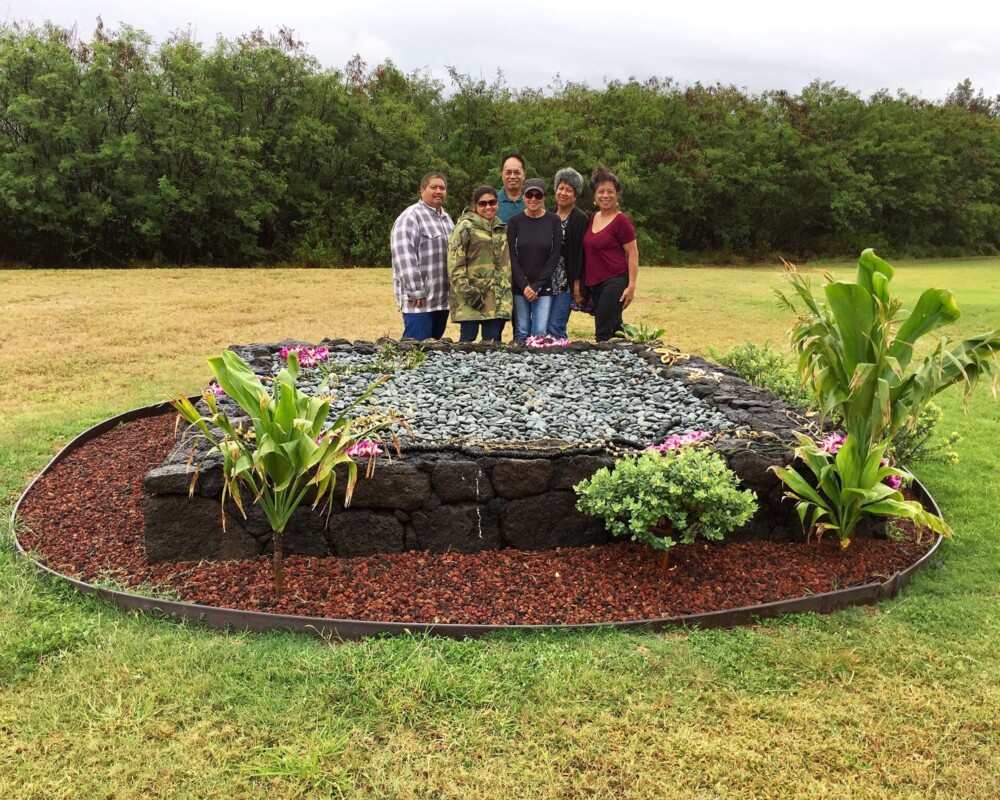Hawai‘i Preservation in Practice Training Seminar:
Native Hawaiian Burial Protection & NAGPRA
Historic Hawai‘i Foundation, in partnership with the Department of the Interior’s National Park Service and Office of Native Hawaiian Relations, will offer a free seminar on grave protections and repatriation.
Native Hawaiian Burial Protection and NAGRPA
Date: Wednesday, May 26, 2021
Time: 10:00 – 11:45 a.m.
Cost: Free
Virtual Webinar via ZOOM
The seminars provide training to the native Hawaiian community and members of the public, private and government sectors who are interested in Native Hawaiian burial treatment and protection and the laws and procedures that govern them.
Native Hawaiian Burial Protection and NAGPRA
Date: Wednesday, May 26, 2021
Time: 10:00 – 11:45 a.m.
The seminar is co-sponsored by the American Planning Association Hawaiʻi Chapter.
This seminar has been submitted to the American Planning Association for certificate maintenance credits for AICP.
ABOUT THE COURSE
The seminar will present the historic and cultural context for grave protections and repatriation and best practices for avoiding sensitive sites and engaging in consultation with lineal and cultural descendants.
The course will include an examination of the federal Native American Graves and Repatriation Act (NAGPRA) law and the state HRS 6E historic preservation law and explore procedures, standards and guidelines and their relationship to native Hawaiian burial treatment and protection.
Through the training attendees will learn:
• Cultural context for Hawaiian burials and treatment for iwi kūpuna;
• Historical context for burial protection laws and systems;
• Purpose, use and implementation of HRS 6E-43, 43.5, 43.6: Hawai‘i’s statutes for Native Hawaiian burial protection;
• Purpose, use and implementation of NAGPRA: National laws for grave protection and repatriation;
• Tips, best practices, and practical advice on how to avoid sensitive sites and consult with lineal and cultural descendants;
• Guidance on what not to do
WHO SHOULD ATTEND?
• Federal, state and local agencies who participate in NAGPRA and HRS-6E consultation in Hawai‘i
• Native Hawaiian organizations and community members
• Government agencies and elected officials who implement land use regulations that include protection of historic and cultural resources
• Members of historic preservation and cultural resources boards and commissions
• Land use and design professionals, including planners, architects, engineers, landscape architects, archaeologists, cultural resource managers, historians and architectural historians
• Community organizations or individuals with stewardship responsibilities for historic or cultural properties.
• Other members of the public or organizations interested in preserving historic & cultural sites
PRESENTERS
Lisa Oshiro Suganuma, Policy Analyst in the U.S. Department of the Interior’s Office of Native Hawaiian Relations, has been working in its Honolulu office since 2010. She is a graduate of Kamehameha Schools – Kapālama, Harvey Mudd College in Claremont, California (B.S. in Applied Mathematics) and the University of New Mexico School of Law (J.D. and Indian Law Certificate).
Oshiro has worked on matters of indigenous affairs, self-determination and self-governance for more than twenty-five years since working for DNA – People’s Legal Services in Shiprock, New Mexico, within the Navajo Nation and California Indian Legal Services before returning home and working for the Council for Native Hawaiian Advancement. Prior to joining the federal government, Oshiro worked for the State of Hawai‘i’s Department of Hawaiian Home Lands and the Hawaii State Attorney General.
Stanton Enomoto, Department of the Interior Senior Director for Native Hawaiians, received his bachelor’s degree in Geology and Environmental Studies from Macalester College in St. Paul, Minnesota. He was raised on Maui and graduated from the Kamehameha Schools. Enomoto is an experienced professional with subject matter expertise related to preservation of historic and traditional cultural properties.
Previously, Enomoto served as the Climate Change Cultural Adaptation Coordinator for the National Park Service (NPS). He was the NPS representative to the Pacific Islands Climate Change Cooperative (PICCC) and provides cultural resource adaptation planning and implementation support to the cooperative’s member organizations in Hawaiʻi and the U.S.-affiliated states in the Pacific. Prior to joining the federal government, Enomoto spent 18 years working for the State of Hawaiʻi and most recently served as the Chief Operating Officer for the Office of Hawaiian Affairs.
Kiersten Faulkner, Executive Director, Historic Hawai‘i Foundation
As chief executive, Faulkner oversees all aspects of its preservation programs, strategic planning, business lines and operational matters. Prior to joining HHF, Faulkner was a Senior City Planner for the City & County of Denver, where she managed complex and controversial comprehensive planning, promulgation of land use and urban design regulations, and development proposals. She holds a Master of Arts in Urban and Environmental Policy from Tufts University and is a member of the American Institute of Certified Planners (AICP).
Regina Keʻalapuaonālaniwikimekeānuenue Hilo works as a Burial Sites Specialist in the History and Culture Branch of the State Historic Preservation Division (SHPD) to mitigate potential effects to iwi kūpuna. She is also an Applied Archaeology MA student with the University of Hawai‘i at Mānoa (UHM) Department of Anthropology. Born and raised in Kapāhulu, Hilo is a Kamehameha Schools graduate, with a BA from UHM. Hilo is a Native Hawaiian archaeologist, Hawaiian language researcher and speaker, and a former president of the Society for Hawaiian Archaeology (SHA). She is one of two appointed Student Representatives for People of Color on the Society for American Archaeology’s Government Affairs Committee.
Kamana‘o Mills currently works for Kamehameha Schools as a Senior Supervising Program Manager. Previously, Mills came from the Department of Hawaiian Home Lands where he worked as Special Assistant to the Chairman for 13 years. A former teacher in the Hawaiian immersion schools and a Hawaiian language teacher at the University of Hawai‘i at Mānoa, Mills was also employed at the Office of Hawaiian Affairs – Culture Office, DLNR – State Historic Preservation Division Burials Program, and the Legislative Office of the Auditor. Mills has a Bachelor’s Degree in Hawaiian Language and a Master’s Degree in Public Administration from the University of Hawai‘i at Mānoa.
Clifford Nae‘ole serves as the Hawaiian cultural advisor for The Ritz-Carlton, Kapalua (Maui). In this unique position for over 20 years, Nae‘ole advises and educates employees and guests on proper Hawaiian protocol and customs. In the 1980s, he was a lead advocate for the protection of the sacred Honokahua Burial Preserve. After the preserve was placed into a conservation easement, Nae‘ole took on the kuleana of continuing to care for this important historic site. For over 20 years, he has worked to ensure the protection and preservation of the preserve and burial grounds. Former president of the statewide Native Hawaiian Hospitality Association, Nae‘ole’s knowledge of ceremony and protocol prompted the Governor of the State of Hawai‘i to nominate him for terms as a Burial Commissioner for the Hawaiian Burial Council for Maui and Lāna‘i. He is an active supporter of Maui’s Hawaiian Language Immersion Schools — Punana Leo O Maui and Kulakaiapuni. He is also the founder of Ho‘ohali‘a Hawaiian Consulting and is a current partner of E Ola Pono Consulting, dedicated to creating bridges between the Hawaiian culture and the contemporary business world. As one of the most renowned cultural advisors on the island of Maui, Nae‘ole is helping to restore and educate the world about the Hawaiian culture, language and practices.
RESOURCES
• What is the Native American Graves Protection and Repatriation Act (NAGPRA)?
https://www.nps.gov/history/tribes/Documents/NAGPRA.pdf
• HRS 6E Historic Preservation Law
• Department of the Interior, Office of Native Hawaiian Relations (ONHR):
Native Hawaiian Organization Notification List
Native Hawaiian Organization Consultation Protocol
View the Consultation Procedure Flow Chart
• Hawai‘i State Historic Preservation Division (SHPD): Burial Sites Program
Images at top: 1. Honokahua Burial Site is a 14-acre historical and cultural landmark protecting the iwi kūpuna buried in the sand dunes at Kapalua. 2. Family members with Thomas Nizo at Lua Kupapaʻu O Nohili Crypt. Lua Kupapaʻu O Nohili Crypt received a 2020 Preservation Award for Achievement in New Construction.



